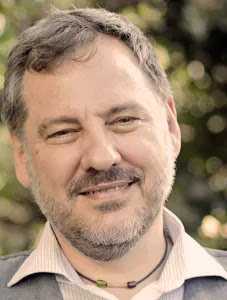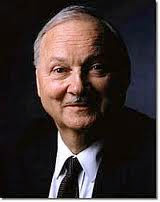SDGs the Way Forward
2015 will be here very soon
We have come a long way from the meeting in Solo in July, 2011 when
Paula Caballero Gomez from Colombia floated the idea of Sustainable Development
Goals as the replacement for the MDGs in 2015 with the support of the
governments of Guatemala and Peru.
For those who have been part of the discussion, the last 3 and half
years shows how difficult it can be to develop policy at the intergovernmental
level. It also has been one of the most open and transparent processes that I
have seen while working at this level for 25 years.
The first few months saw the UN DPI NGO Conference in September 2011
put forward the first suggestions of goals and targets. This was followed by the
government retreat in Colombia in November 2011. This was the first time the
governments discussed the idea and it was interesting to see the initial
opposition from a number of the development Ministries’ donor countries to the
idea of anything other than an MDG+ agenda. One felt you could add a couple of
SD Targets here and there and it would be fine. This was a position often
echoed by a number of northern development NGOs in the beginning.
The Sustainable Development Goals Open Working Group (SDG OWG) process
was exhausting but also fascinating. At the end, there were 17 goals and 169 targets.
Following the report, the UN GA resolution on the 10th of September
made the OWG report on SDGs “the main basis for integrating Sustainable
Development Goals into the post-2015 development agenda.” The vast majority of
governments were happy with this position. This includes key European countries
such as Germany and France but a few countries the UK, US, Canada and possibly
a couple of other northern countries wanted a smaller number. The UK had already
been lobbying against the EU position informally in the run up and at Rio+20 it
had lost a lot of respect with governments, particularly within the EU.
Why 17 and not 10-12?
The main argument put forward is that the number is too many to explain
to the general public. I’ve expressed this before and I’ll do it again here.
The MDGs dealt with ONLY developing countries, and only development issues. The
SDGs deal with ALL countries and sustainable development. I would also add to
this that what we are looking for is a transformational agenda NOT an MDG+ development
agenda. This is OUR chance to realize the hope of the first Rio conference in
1992 and build a more robust sustainable development blueprint for the 21st
century for EVERYBODY. Finally, the reality is that some goals and targets will
be more relevant to certain countries than others and this enables a
constructive national dialogue and then an ownership of what needs to be done
by national stakeholders.
The Synthesis Report and what
changes can be made on the SDG side?
I do believe that the opportunity given to governments and all of us to
reflect on the outcome document from the SDG OWG before the negotiations start
was a great decision. If I was writing the SG’s report the section on the SDGs,
I would respect the work undertaken by the governments in the SDG OWG (70
countries) and the UNGA resolution leaves what the countries had agreed along
except in the following four areas:
1.
If there is a missing target that should be included but was missed – an example
of this would be antibiotic resistance, which came to the SDG OWG late and the
report of WHO came out a week after the SDG OWG last meeting. Here WHO is
estimating deaths at around 25 million, similar to HIV/AIDs. It also will have
a huge impact on food security as often animals kept in close proximity to each
other are pumped full of antibiotics and they will become anti-biotic resistant
and so farming practices will have to change drastically in the coming 15 years.
Sweden raised this issue but only a few countries took it up.
2.
Where an agreement in other UN forum
(particularly legally binding ones) exceeds the target in the SDG OWG. As the
process was negotiated, there may be a few areas at the end where the advice
from other UN bodies wasn’t integrated into the final document. It would be
important to suggest changes here because those more progressive targets would
have been negotiated in an area where experts from that area negotiated them.
3.
The integration targets – As the move to reduce
the number of targets happened, we lost a number of ‘Nexus’ type targets. These
will be critical to ensure that the implementation is done cross-sectorially.
4.
Clustering the Goals was an issue raised in the
SDG OWG and I think that might still be a good idea – it might also allow for a
meta-goal in social, environmental, economic and governance.
Means of Implementation
Another question which needs some work within G77 is whether ‘Means of Implementation’
are best suited in a goal and target approach.
In a previous blog I suggested that it might be worth going back to the
2002 South Africa non-paper. This approached the delivery of goals and targets
with policy recommendations under each goal area. I tend to think that this would
allow clearer actions and not then becoming a limiting issue. This was the
suggested SA approach in 2002:
a.
proposed targets and timeframes
b.
proposed actions (including capacity building,
education and technology facilitation)
c.
resources
d.
institutional mechanisms
e.
co-ordination
f.
monitoring
g.
stakeholder involvement
h.
implementation plan sustainability
To read the SA non paper go here.
This would also reduce the number of targets by around 40 as these
would become part of policy guidance. The approach to MOI might be best if the
MOI is relevant to a particular goal. There are more general MOI funding issues
around the delivery of the goals and targets as a whole but perhaps they are
best dealt with in the ‘Financing for Development’ Conference.
Declaration
One of the major outcomes from the 2015 process will be a Declaration
by Heads of State – this clearly will need to reflect what is in the SDGs, but
what else should it do? This is the 70th anniversary year of the UN
and so the Declaration should also embrace a recognition of where we have come
from but also what needs to be done in the future. It should inspire this
generation to give its commitment to delivering the goals but also perhaps this
is where the issues of peace and security should be found. After all, the Rio
Declaration states that:
“Warfare is inherently destructive of sustainable development. States
shall therefore respect
international law providing protection for the environment in times of
armed conflict and cooperate in its further development, as necessary.”
(Principle 24)
Perhaps the starting point for such a Declaration should be the
Preamble to Agenda 21 which stated:
“1.1. Humanity stands at a defining moment in history. We are
confronted with a perpetuation of disparities between and within nations, a
worsening of poverty, hunger, ill health and illiteracy, and the continuing
deterioration of the ecosystems on which we depend for our well-being. However,
integration of environment and development concerns and greater attention to
them will lead to the fulfilment of basic needs, improved living standards for
all, better protected and managed ecosystems and a safer, more prosperous
future. No nation can achieve this on its own; but together we can - in a
global partnership for sustainable development.”
The words are as true today as they were in 1992, unfortunately the
lack of delivery of Agenda 21 has made those challenges in many areas even
starker.



Comments
Post a Comment